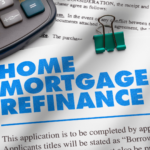Mortgage Terms Glossary
Figuring out all the jargon associated with getting a mortgage can be daunting. To help you out, we’ve put together a glossary of some of the most common terms you’ll come across.
Amortization: The schedule outlining how much of each mortgage payment goes to the principal and how much goes to the interest.
Annual Percentage Rate (APR): The true cost of borrowing money, expressed as a yearly rate. The APR includes the interest rate, points, broker fees, and certain other credit charges that the borrower may be required to pay. This rate is useful for comparing different loans because it shows the total cost of borrowing.
Appraisal: A professional estimate of the value of a home, used to determine the loan-to-value ratio.
Assumption: An arrangement where the buyer takes over responsibility for an existing loan from the seller. In order for this to happen, the lender must agree to the assumption and usually requires that the buyer qualifies for the loan under their own name and credit history.
Blended Payment Mortgage: A type of mortgage in which two or more loans are used to finance a home purchase. Usually one of these loans is at a fixed interest rate for a set period (usually 5 years), and the second loan has a variable interest rate that changes with prime lending rates. The monthly payments are calculated by adding together a portion of each payment that covers both loans, then dividing by 12 months.
Bridge financing: A short-term loan is used until more permanent financing can be arranged. It is often used when someone is buying a new home before their old home has sold.
Mortgage Types
A mortgage is a loan secured by a property—usually your home. With a fixed-rate mortgage, you’ll make the same monthly principal and interest (P&I) payment for the life of your loan. That means your payment will never go up, giving you important budgeting certainty.
If you want the lowest possible monthly payments during the first few years of your mortgage, choose a variable-rate mortgage (sometimes called an adjustable-rate mortgage or ARM). You’ll get a low rate for a set period of time, typically five years. At the end of the term, your interest rate—and therefore, your monthly payment—may adjust higher or lower, depending on prevailing interest rates.
Mortgage Types
Fixed-Rate Mortgage: Your interest rate and monthly payments will stay the same for the entire term of your loan.
Variable-Rate Mortgage: Your interest rate could change during your loan term, affecting how much your monthly payments would be.
Mortgage Payment Options
There are a few different options when it comes to making your mortgage payments. You can choose to make regular payments, accelerated payments, or lump sum payments.
Regular payments are the most common type of payment and are made on a schedule that is agreed upon when you take out your mortgage. Accelerated payments are made more frequently than regular payments, and can help you pay off your mortgage faster. Lump sum payments are one-time payments that are usually made in addition to your regular mortgage payments.
Mortgage Refinancing
Mortgage refinancing is when you replace your current mortgage with a new one, usually at a lower interest rate. Refinancing can extend the term of your mortgage, which can reduce your monthly payments, or it can give you access to equity in your home so you can do home improvements or make other large purchases.
Mortgage Renewal
The last few years have brought a lot of changes to the mortgage industry in Canada. One of the most significant changes has been the introduction of new mortgage renewal rules.
This can be a good thing or a bad thing, depending on your personal circumstances. If interest rates have gone up since you originally got your mortgage, then reapplying for a new mortgage at the current rates could end up costing you more money.
On the other hand, if interest rates have gone down since you originally got your mortgage, then reapplying for a new mortgage at the current rates could save you money.
The bottom line is that you need to be prepared for the possibility of having to renegotiate your mortgage when your term expires. Having a good relationship with your lender and staying up-to-date on current interest rates will help you make the best decision for your personal circumstances.
Mortgage Default
A mortgage default occurs when a borrower fails to make a scheduled payment on their mortgage. If this happens, the lender may start legal proceedings to begin the process of foreclosure and ultimately force the sale of the property in order to recoup their losses. In some cases, the borrower may be able to work out a new repayment plan with the lender or sell the property before it goes into foreclosure.
Mortgage Fraud
Mortgage fraud is a serious criminal offense in Canada. It occurs when someone knowingly provides false or misleading information on a mortgage application. Mortgage fraud can result in a criminal record, a jail sentence, and/or a fine.
If you are convicted of mortgage fraud, it will be very difficult to get another mortgage in the future. Additionally, the Canada Mortgage and Housing Corporation (CMHC) will be notified of your conviction, and your name will be added to their list of high-risk borrowers. This could make it difficult for you to buy a home in the future, even if you are able to get another mortgage.
If you are accused of mortgage fraud, it is important to speak to a lawyer as soon as possible. A lawyer can help you understand the charges against you and advise you on your best course of action.
Mortgage Insurance
If you are obtaining a mortgage through a bank, they will often require that you get mortgage insurance to protect them in case you default on your loan. This insurance is paid for by the borrower and is often required if the down payment on the home is less than 20 percent of the total value of the property.








